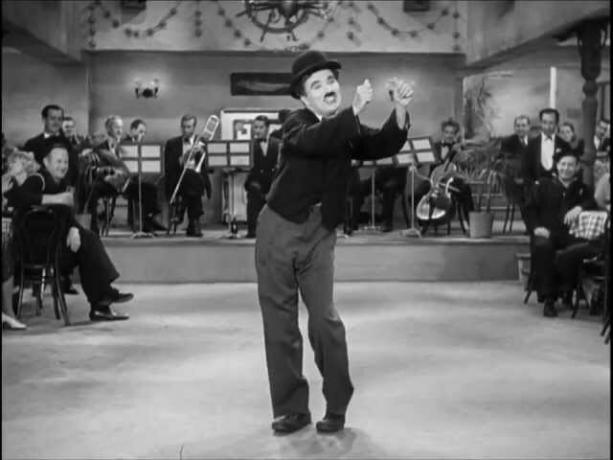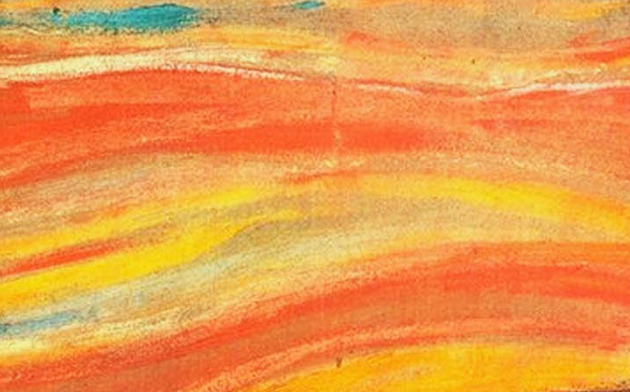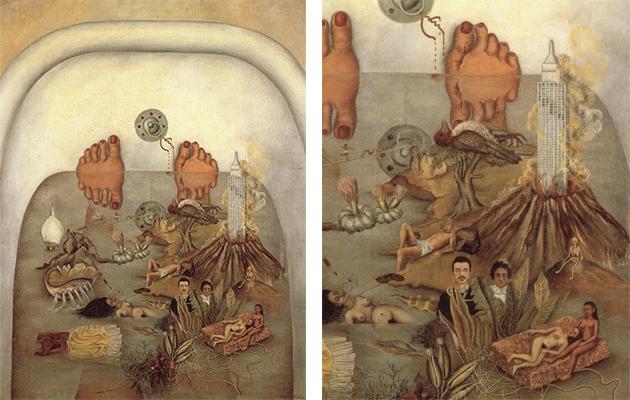Modern times is a 1936 film conceived by Charles Chaplin. The production has become a cinema classic and is one of the filmmaker's best known.
The main character is Carlitos, also played by Chaplin. This unusual figure is the artist's trademark and is present in most of his films.
Carlitos is a man of the people. He manages to brilliantly mix humor with ingenuity, thus being a kind of clown.
Modern Time Summary
Modern times chronicles the life of a common worker, a man who is seeking to establish himself both professionally and as an individual in a society full of technological innovations and contradictions.
The story begins with Carlitos being a factory worker. There, the work is tiring and uninteresting, as its only function is to thread screws.

The man does not adapt to repetitive activity and the demands of the boss, always charging for productivity and performance.
The film portrays the concern and willingness of the owners of the means of production to be able to profit more and more exploiting workers.
This fact is evident in the scene in which Carlitos is forced to test a "feeding machine", which according to its inventors would "make it easier" for employees to have lunch.
In fact, it was a device that promised to "feed" the workers while they continued to carry out their tasks. Obviously, the invention doesn't work right, which makes for a very funny interpretation of Chaplin.

Another important step in the factory is when Carlitos gets confused with the work and ends up being "swallowed up" by the machine and getting into its gears. This part shows the dehumanization of man, almost like a mechanical part.
After that, Carlitos suffers a nervous breakdown and is sent away. The man then joins a street protest and ends up in jail, which demonstrates the repression of social movements.

In prison, he accidentally ingests drugs, but manages to be released. The man then goes looking for another job and manages to be a department store security guard, but is soon fired.
Carlitos meets Ellen, a young woman who was in an equally difficult situation and stole food to survive. The two fall in love, but soon he gets involved again in a mess and is arrested once again.
Upon leaving jail, they are reunited. At that time, the girl was working as a dancer in a cafe. She gets Carlitos a job as a waiter. In addition, he also makes presentations to clients.

Ellen is considered a criminal for loitering and is wanted by the police. At that moment, Carlitos joins her and the two leave in seeks better living conditions.
Historical context of Modern times
The film takes place in the 30s, right after the "Great Depression", or 29 crisis. At that time, there was a recession in capitalism, a crash in the New York stock market and other social tensions that resulted in high unemployment, hunger and misery.
There was also an important technological growth, the so-called "modernity". Factories were developing production systems to improve the working and production time of workers.
Taylorism and Fordism were some of the bourgeoisie's strategies for this. In these systems, workers perform only one task in the factories, increasing the employers' productivity and profit, but not understanding the process of building the products.
This is a much explored historical concept in the film and can be a good example in the classroom.
At that time, there were also several political and social unrest that resulted in the Second World War.
To complement your knowledge of the historical context, read:
- Taylorism
- Fordism
movie trailer
The talented Charles Chaplin
Charles Spencer Chaplin was a British multi-artist responsible for dozens of films in the 20th century. He was born on April 16, 1889 in London, England.
Son of artists, Chaplin learned music in his early childhood, when his parents separated. His father dies from alcoholism.
His mother had emotional imbalances and was committed to an asylum. Thus, Chaplin ends up living in an orphanage and attending a school for poor children.
At the age of 19, he begins to mime in a theater group and, in 1910, makes his first tour of the USA. From then on, his talent is discovered and he starts to make a living from art.

In 1915, Chaplin released the film the bum, originally The tramp. Then comes "Carlitos", the incredible character of the filmmaker and actor, who would accompany him for the rest of his life.
Chaplin was brilliant and participated in all the creation process of his works, scripting, producing, directing, acting, dancing, singing and managing his films.
He was very critical and sensitive to the problems of the world, demonstrating such issues in his work. Because of this, he was considered a communist and anarchist, suffering persecution by the US government, in what became known as McCarthyism.
Charles Chaplin lived to be 88 years old and died on December 25, 1977 in Corsier-sur-Vevey, Switzerland.
You may also be interested in History of Cinema: origin and first films.



